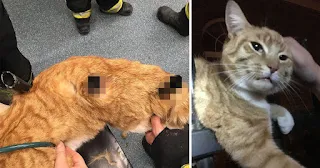Article written by Alex green,
A bouncy castle boss has been jailed after stealing more than £200,000 from a Christian charity to fund his lavish lifestyle. o inflate the profits of his party-hire business.
Lee Patterson, 51, swindled money from disadvantaged children and blew the funds on an extension on his house and a car for his son.
Patterson, director of soft-play area Adventure Kids Leeds, siphoned money from alcohol and drugs charity The Yorkshire Band of Hope Union.
He moved the money to Little Legs, a soft-play area company he started in 2011.
Leeds Crown Court heard Patterson stole £216,000 while working as the project manager for Band of Hope-funded Bramley Family Support Project and Wildfire Project.
Prosecutor Lee Fish said the charities provide emotional support for disadvantaged children, adding: 'There is clear evidence that funds were used to fund a lavish lifestyle.
'It has had a significant impact on the charity. They have had to close a number of projects.
Patterson worked for the Leeds based charity from 2008 until 2012 when the trustees spotted he had used a charity credit card to withdraw money.
Investigations revealed charity money had been transferred to a building firm carrying out work on his house.
Other amounts were also paid into the accounts of Little Legs and his other company Vision Housing.
Patterson, of Marsh, Huddersfield, admitted four offences of fraud. He was the sales manager at a builder's merchant when he sold company property and kept the money for himself.
Nicholas De La Poer, mitigating, said Patterson was still committed to charity work and had continued to support a charity based in Romania.
Mr De La Poer said Patterson had also given some of the stolen money to people who were in financial need. He added: 'He exhibits defective thinking.
Patterson was jailed for three years and four months by Judge Simon Phillips QC who said: 'Many people have been cruelly let down and misled by you.
Your fall from being a senior employee has been monumental.'
After the case, Detective Constable Kate Hardaker said: 'He stripped the charity of thousands of pounds that would have been used to provide emotional and practical support to disadvantaged children and their families.
He has clearly shown no regard for the consequences of his actions and seemingly cared more about personal gain than for those in the community he was charged with caring for.
<!-- Google tag (gtag.js) -->
<script async src="https://www.googletagmanager.com/gtag/js?id=G-XDGJVZXVQ4"></script>
<script>
window.dataLayer = window.dataLayer || [];
function gtag(){dataLayer.push(arguments);}
gtag('js', new Date());
gtag('config', 'G-XDGJVZXVQ4');
</script>







